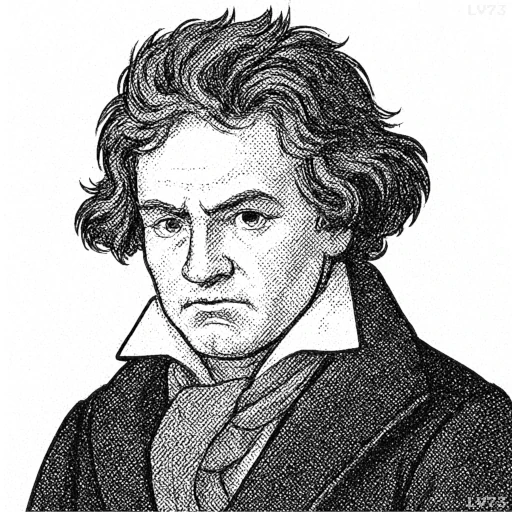“Tones sound, and roar and storm about me until I have set them down in notes.”

- December 16, 1770 – March 26, 1827
- Born in Germany (Holy Roman Empire)
- Composer, pianist
table of contents
Quote
“Tones sound, and roar and storm about me until I have set them down in notes.”
Explanation
In this quote, Beethoven describes the overwhelming, almost chaotic experience of hearing music in his mind, with tones “roaring” and “storming” around him. For Beethoven, music was not simply something that happened in a calm, controlled manner—rather, it was a force of nature that filled his mind with sounds that were constantly shifting and intense. His need to “set them down in notes” reflects his compulsion to give structure to the chaos of his internal musical world, translating it into something tangible and shareable. This speaks to the inner drive that many artists and composers feel: the need to externalize and communicate the flood of creative impulses that flood their minds.
This quote also offers a glimpse into the creative process, particularly for someone like Beethoven, who was not just composing music, but wrestling with it. His inner world was a maelstrom of sounds and emotions, and music was the only means by which he could bring order to the turmoil. In the modern world, many creative individuals experience similar “storms” of inspiration—ideas, emotions, and thoughts that swirl around them, demanding expression. Beethoven’s words remind us that art is often born from a state of inner turbulence, and that the act of creation can serve as both a release and a way to find clarity.
For Beethoven, this intense process of turning chaos into order through music became even more significant as he began to lose his hearing. The “roar” of tones in his mind became a way for him to still experience music, even if he could no longer hear it. In modern times, this experience of internalized creativity and the drive to externalize one’s thoughts or feelings through art resonates deeply, showing how the creative process can often feel like a battle between internal forces that must be harnessed and translated into a form that can be understood by others.
Would you like to share your impressions or related stories about this quote in the comments section?
